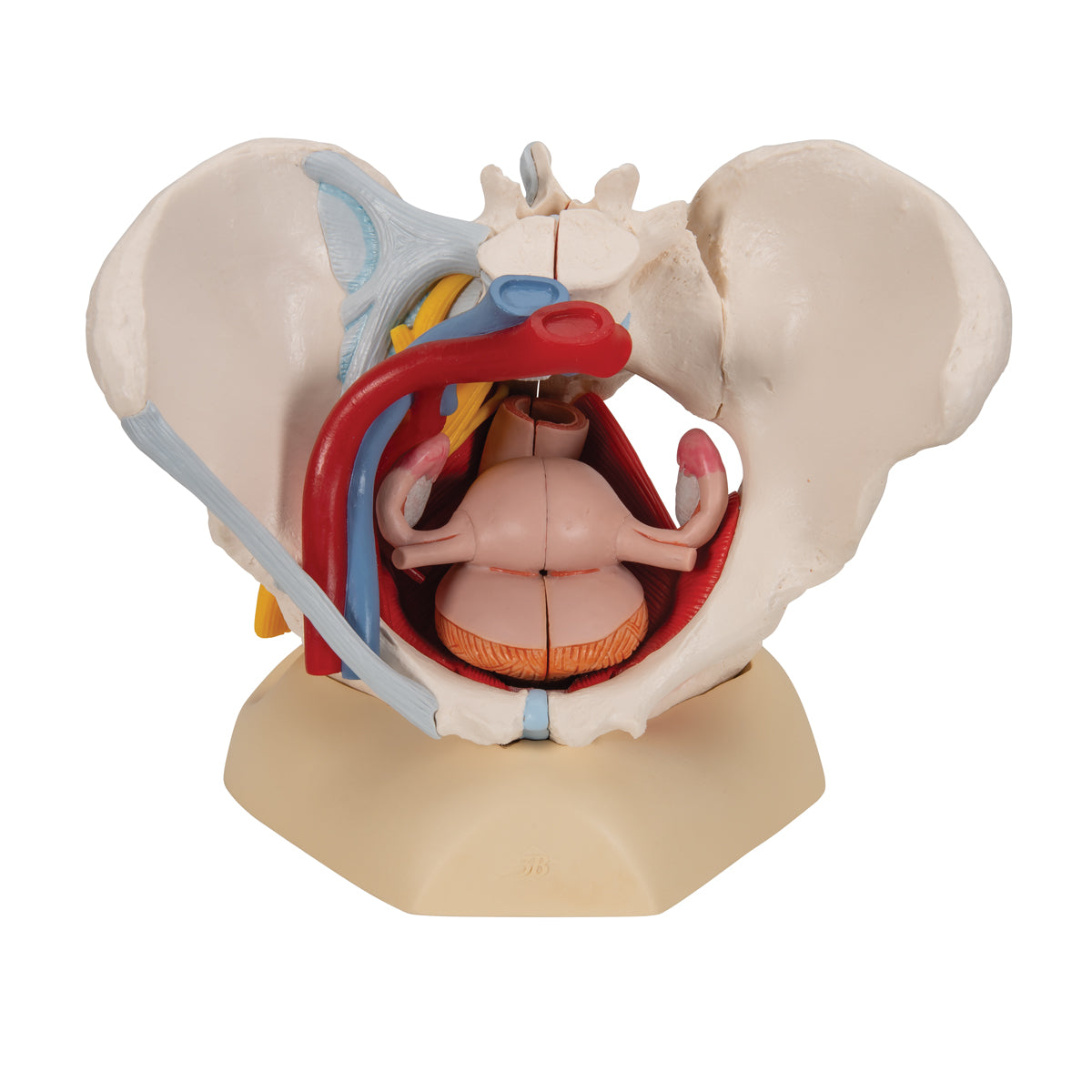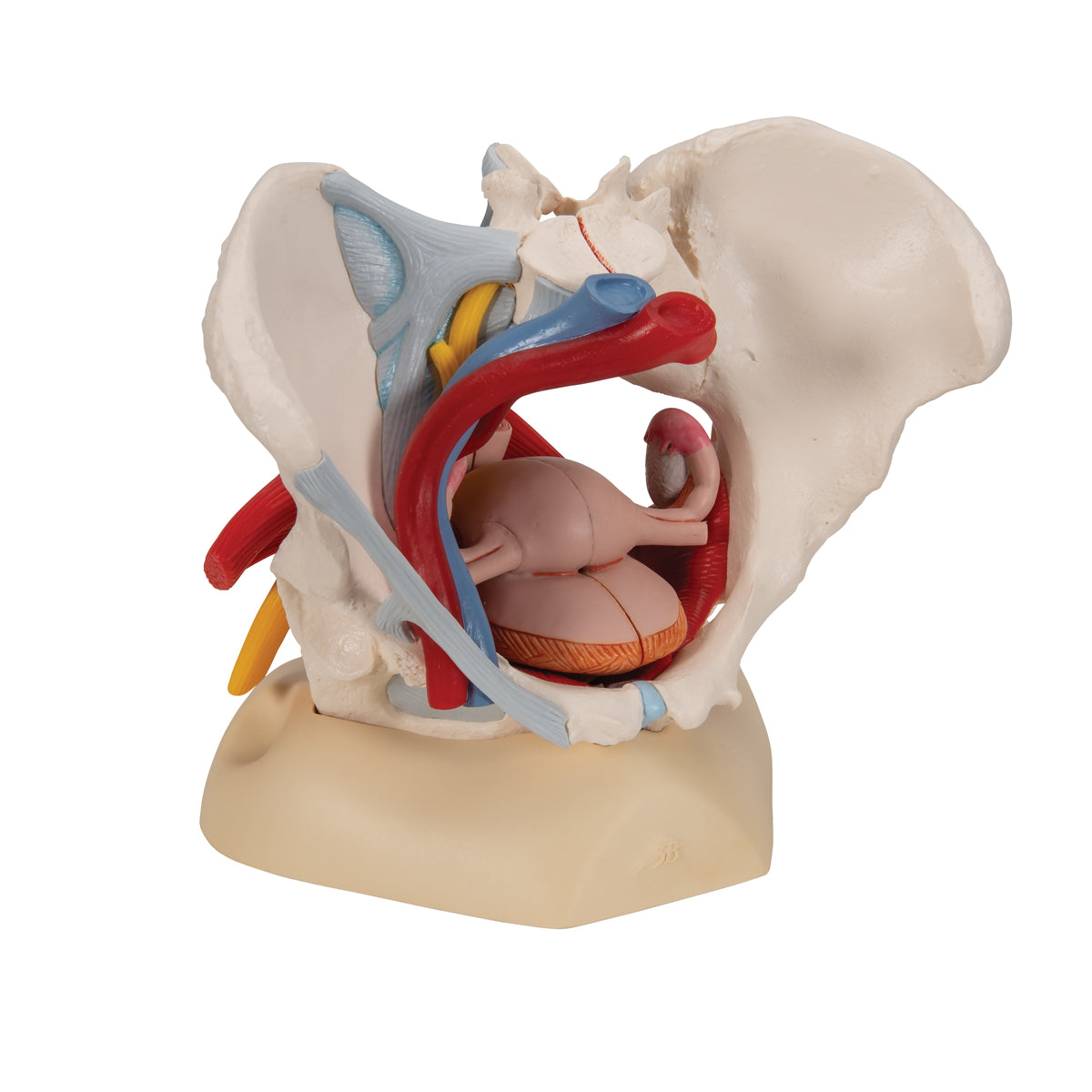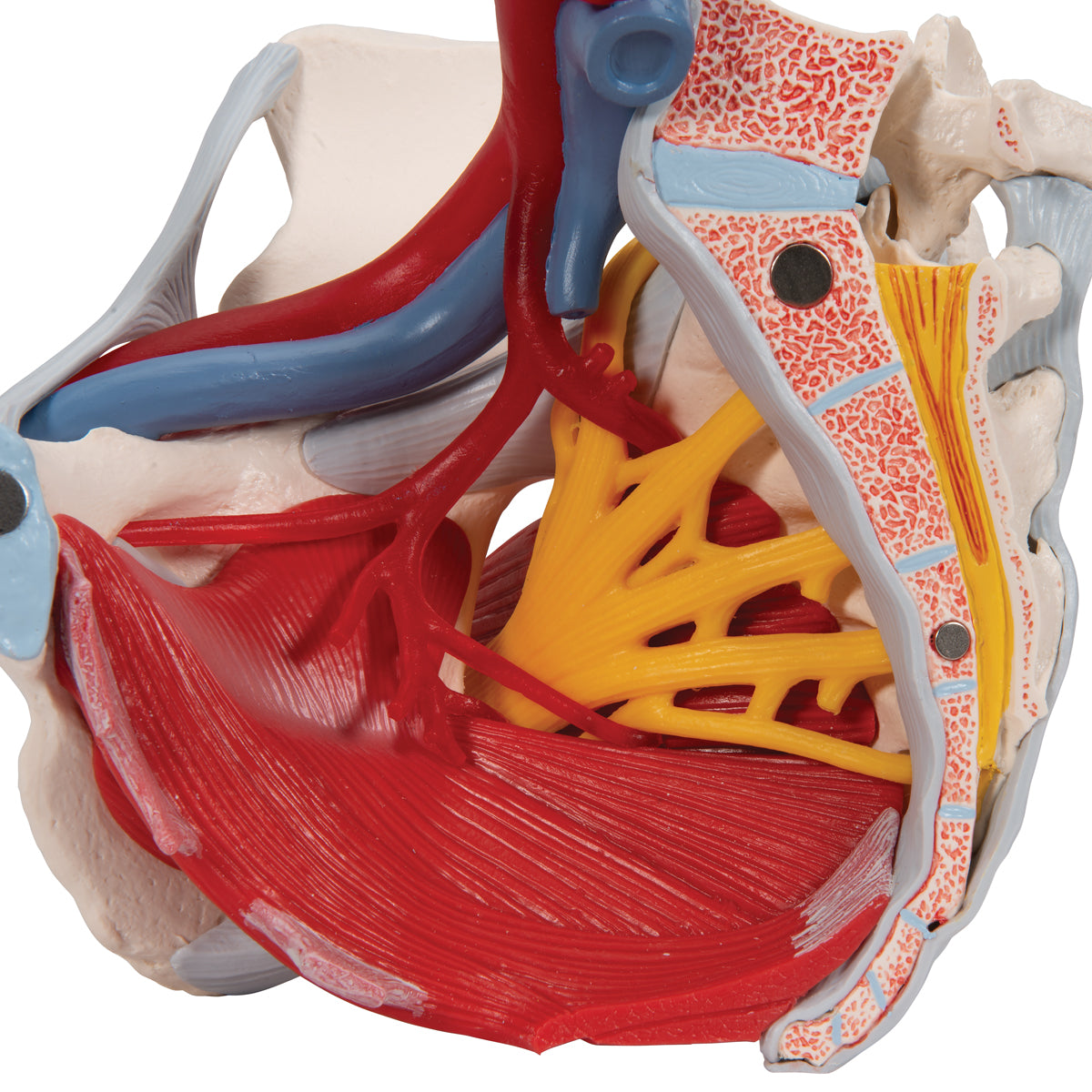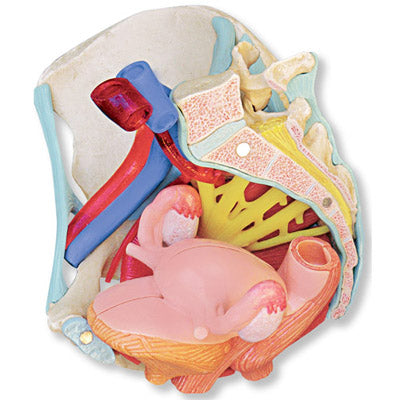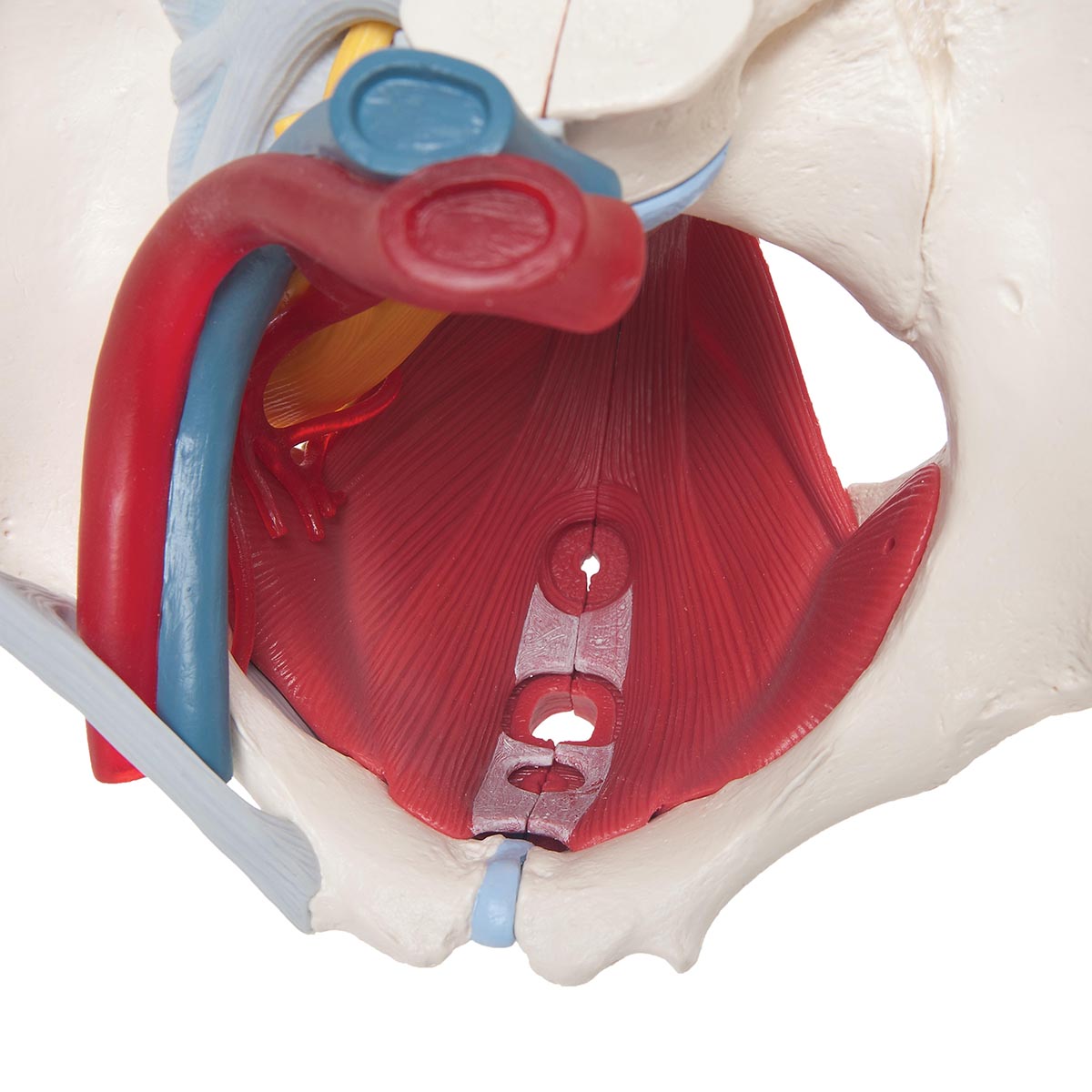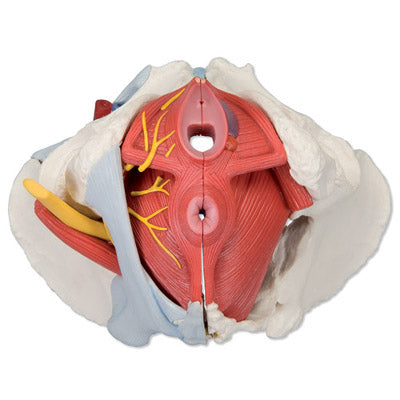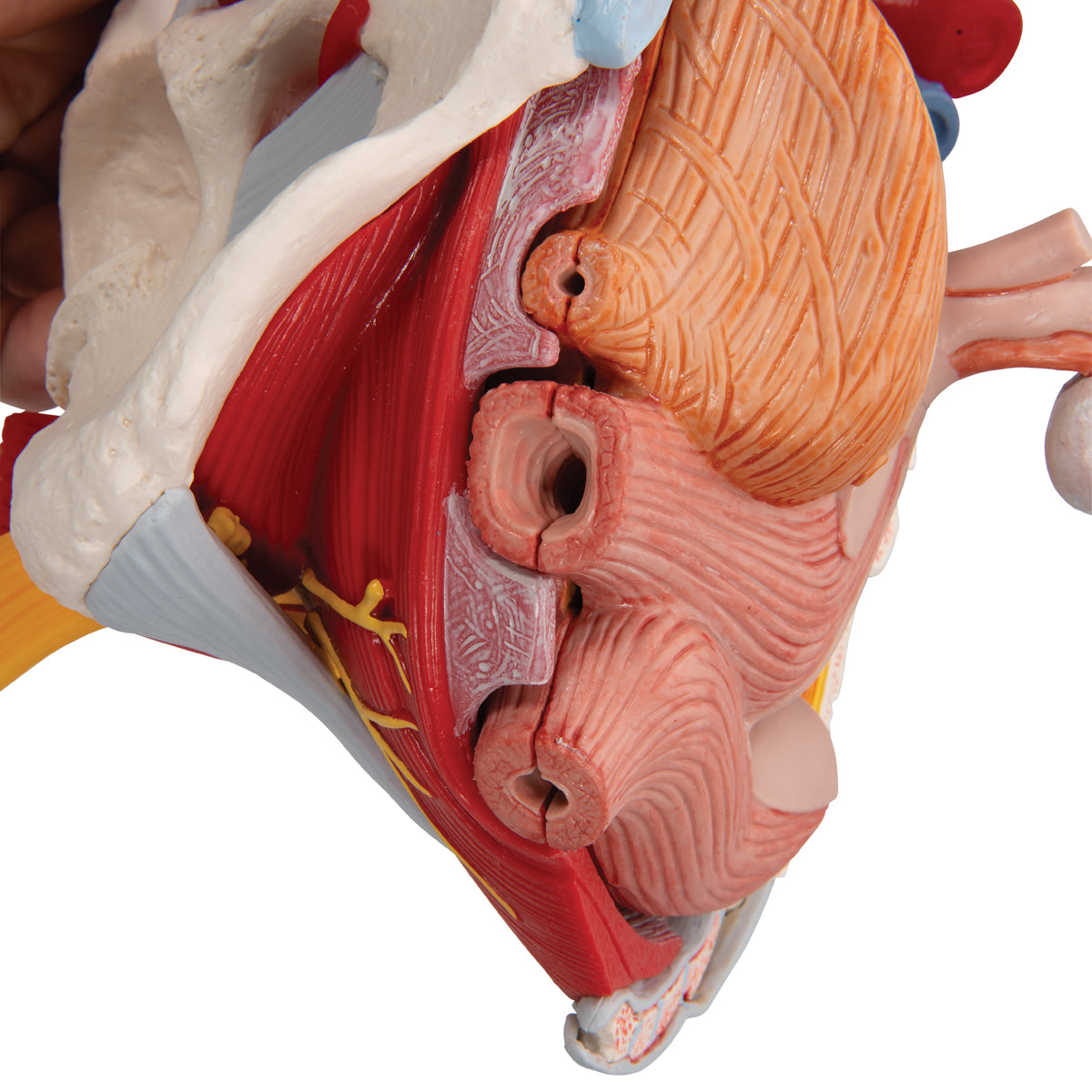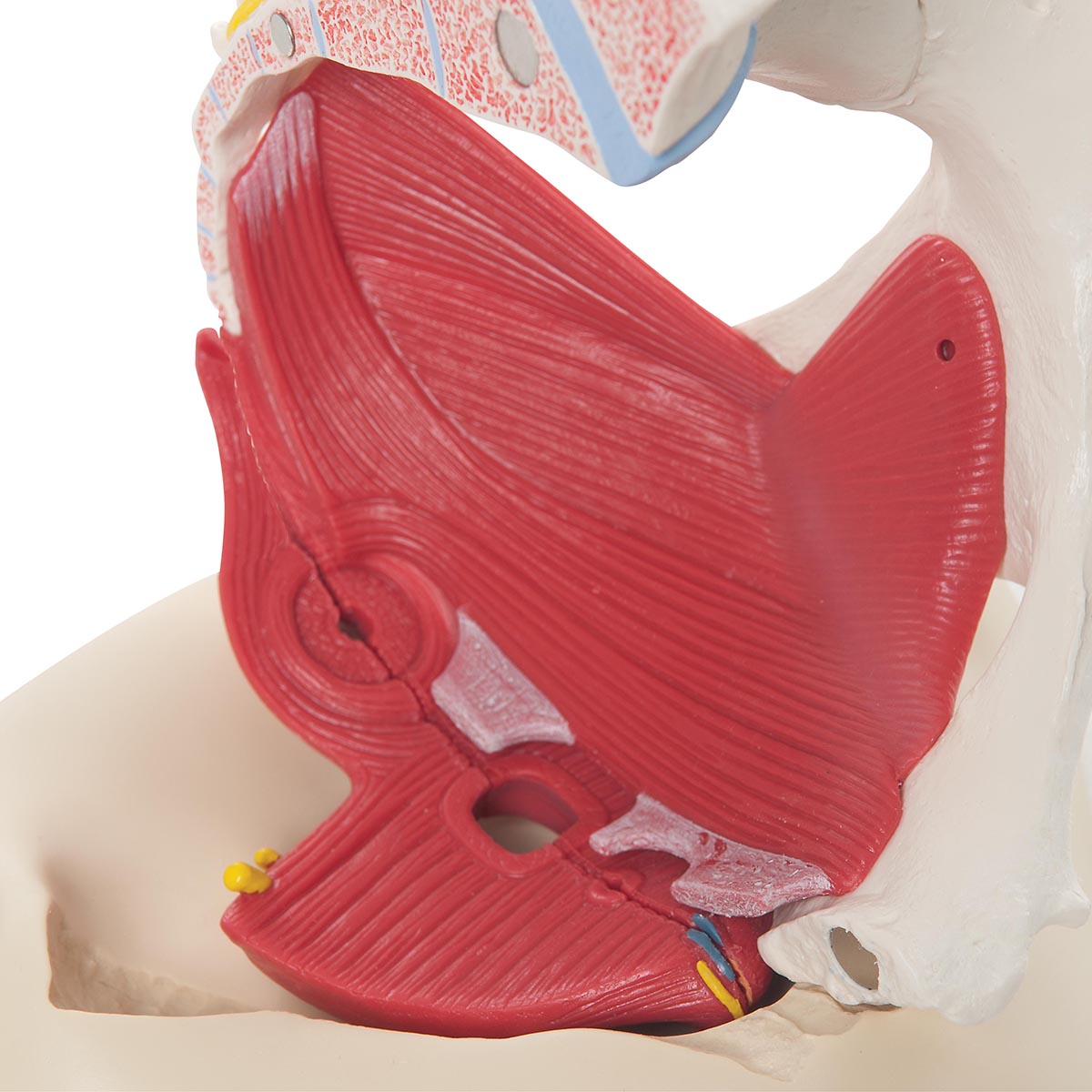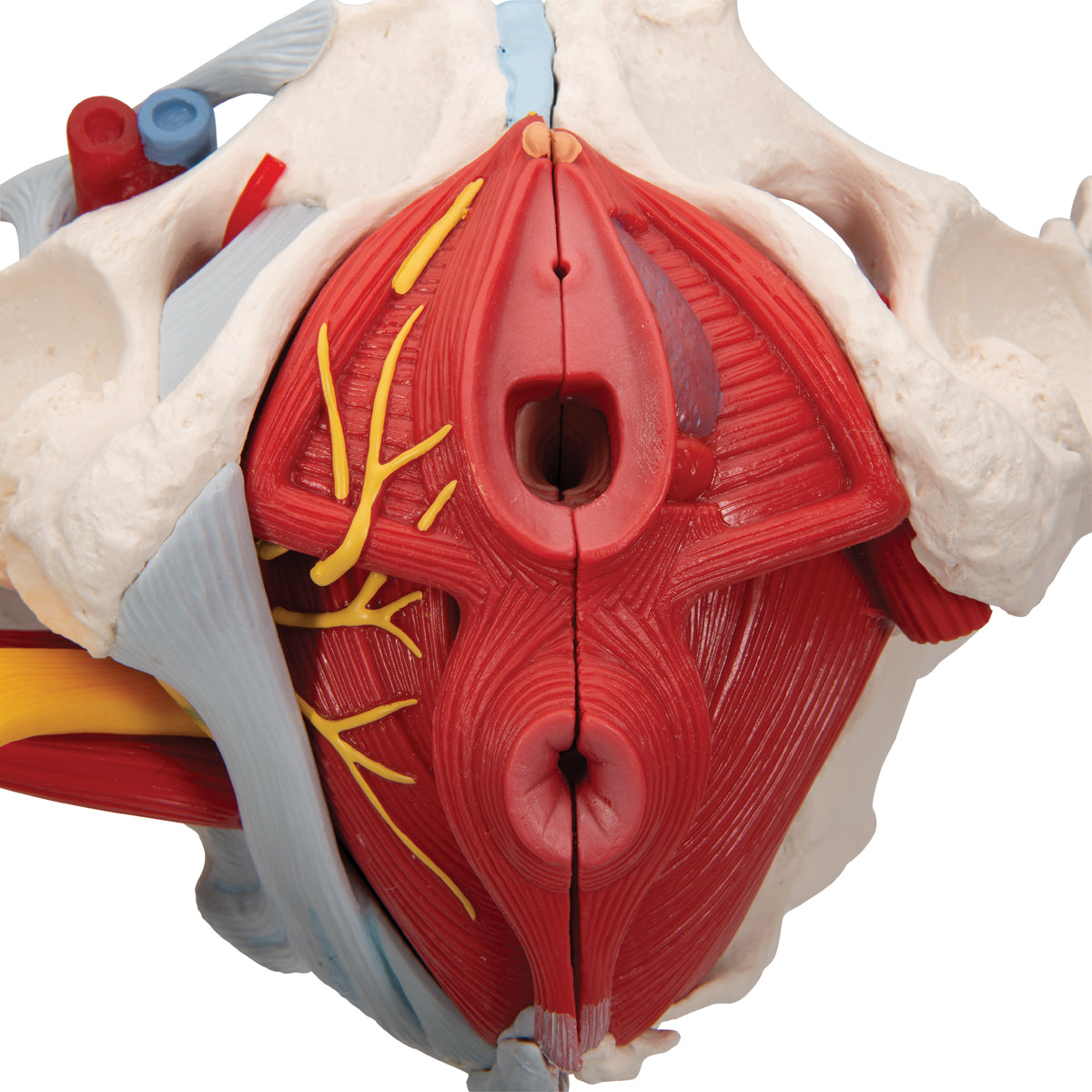SKU:EA1-1000288
Pelvic model showing the pelvic floor, genitals, ligaments, nerves and blood vessels in the woman
Pelvic model showing the pelvic floor, genitals, ligaments, nerves and blood vessels in the woman
ATTENTION! This item ships separately. The delivery time may vary.
Couldn't load pickup availability
This pelvis model shows the female pelvis with the internal genitalia, some of the external genitalia, the pelvic floor and ligaments, nerves and blood vessels on its right side.
The model is developed in natural adult size. It weighs approximately 2.3 kg and the dimensions are
19 x 27 x 19 cm. It can be separated into 6 parts (see the pictures on the left), which are held together using magnets and metal sticks. The degree of detail on the bones is good, but there is no movement in the pelvic joints (e.g. the SI joints and the symphysis), although it e.g. can be split in half. The model is delivered on a stand.
Anatomically speaking
Anatomically speaking
Anatomically, the model shows many different tissues. It shows both the woman's pelvis, the muscles in the pelvic floor with the relationships to the urinary bladder with the urethra and the rectum, the internal genitalia, some of the external genitalia as well as ligaments, nerves and blood vessels on its right side.
The pelvis consists of the 3 building blocks, which are the 2 hip bones and the sacrum. The model also shows the lower lumbar vertebra. In the bone tissue, the most important details can be seen, such as large nodules. Smaller details such as the linea glutaea are omitted. Overall, the model shows the following bones:
Os coxae (the 2 hip bones) of which both are composed
- Os ilium (iliac bone/hip bone)
- Os ischii (seat bone)
- Os pubis (pubic bone)
Us sacrum (sacrum) incl. os coccygis (coccyx)
5th lumbar vertebra (lumbar vertebra)
The pelvic floor (also called the pelvic floor or diaphragma pelvis in Latin) consists of the following muscles, which are clearly visible:
- M. levator ani (consisting of m. pubococcygeus and m. iliococcygeus)
- M. coccygeus
Other muscles are also seen such as the ischiocavernosus muscle, the bulbospongiosus muscle, the obturatorius internus muscle and etc. sphincter ani externus and internus.
The internal genitalia include the ovaries (ovaries), the fallopian tubes (tubae uterinae), the uterus (uterus) and the vagina (vagina), all of which are seen in detail. Anatomically, it is located in the small pelvis.
The external genitalia are shown with the largest and most important details, which anatomically are located in front of and below the symphysis.
The genitals are seen in relation to the urinary bladder (vesica urinaria) with the urethra (urethra) and the rectum (rectum). Many of all these organs function as a channel or a reservoir (eg the vagina and the urinary bladder), which is why they are seen in a pedagogical way with an air-filled cavity (cavity).
Ligaments, nerves and blood vessels are seen on the right side of the model.
Since the model i.a. can be divided in half, important details can be seen in a median section (including cauda equina). As for nerves, the sacral plexus, sciatic nerve (nervus ischiadicus) and other important nerves are also seen. As for blood vessels, the large artery and vein of the pelvis and parts of their branches are seen.
Flexibility
Flexibility
In terms of movement, the pelvis is not flexible. Although the various joints are visible (e.g. the SI joints and the symphysis), they are not movable.
Clinically speaking
Clinically speaking
Clinically speaking, the model can be used in connection with rehabilitation after childbirth, operative interventions, etc. It can also be used to understand diseases and disorders in the woman's pelvis - for example in the genitals, urinary bladder or rectum. Examples are anal fissure, urinary tract infection and tumors.
Furthermore, the model can be used to understand disorders and diseases such as cauda equina syndrome and deep vein thrombosis (DVT) in the pelvis.
Share a link to this product

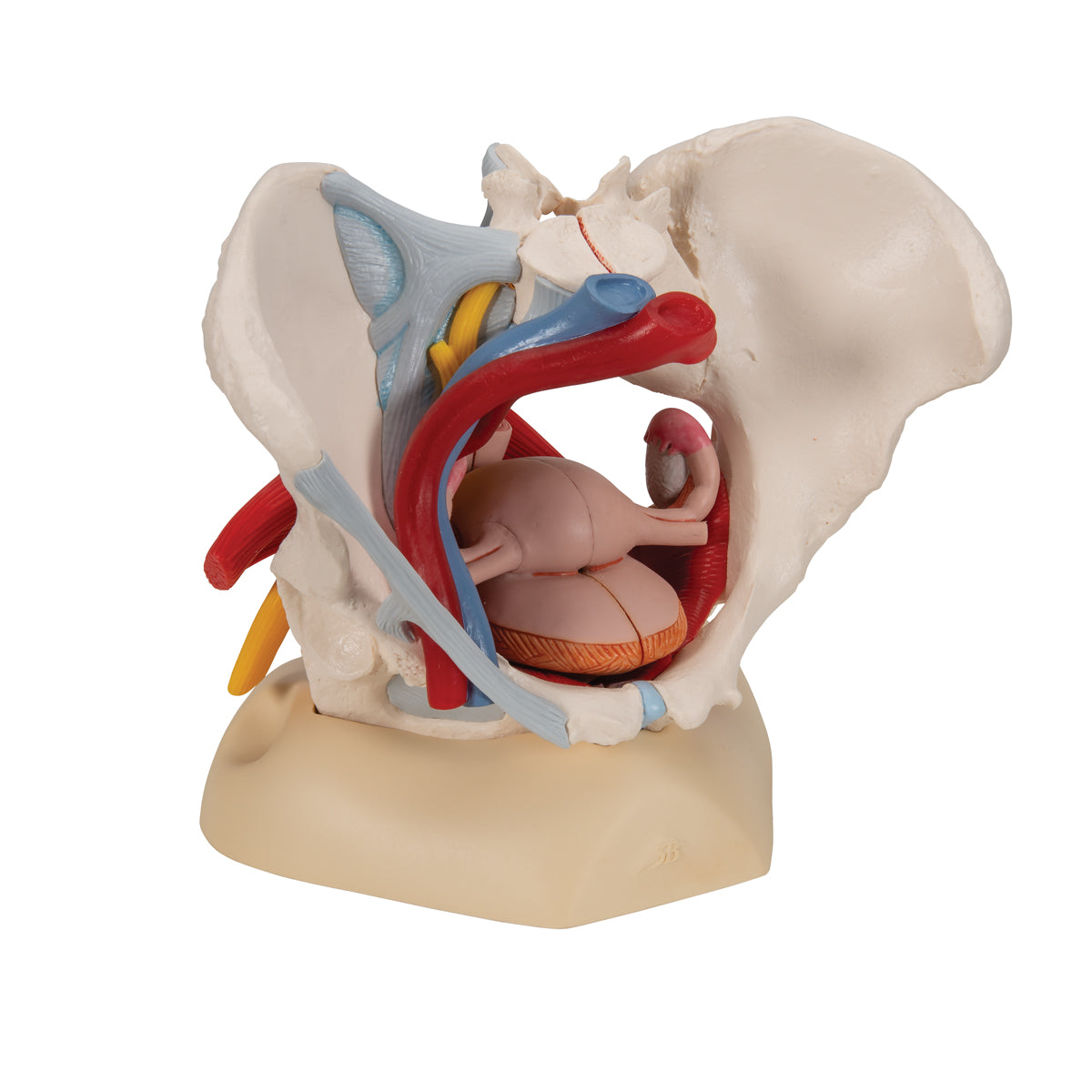
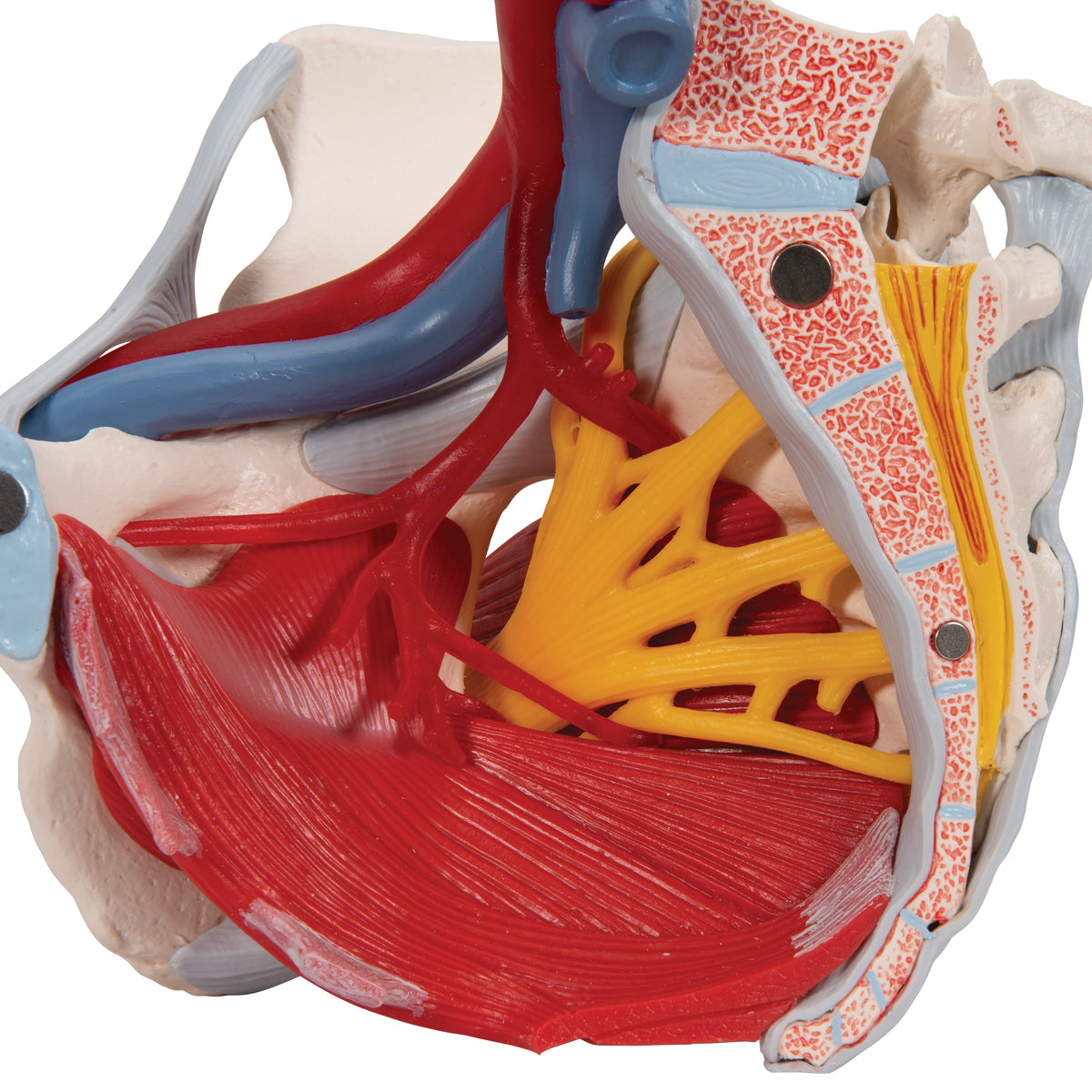
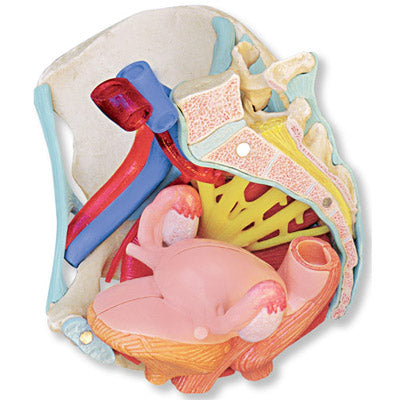
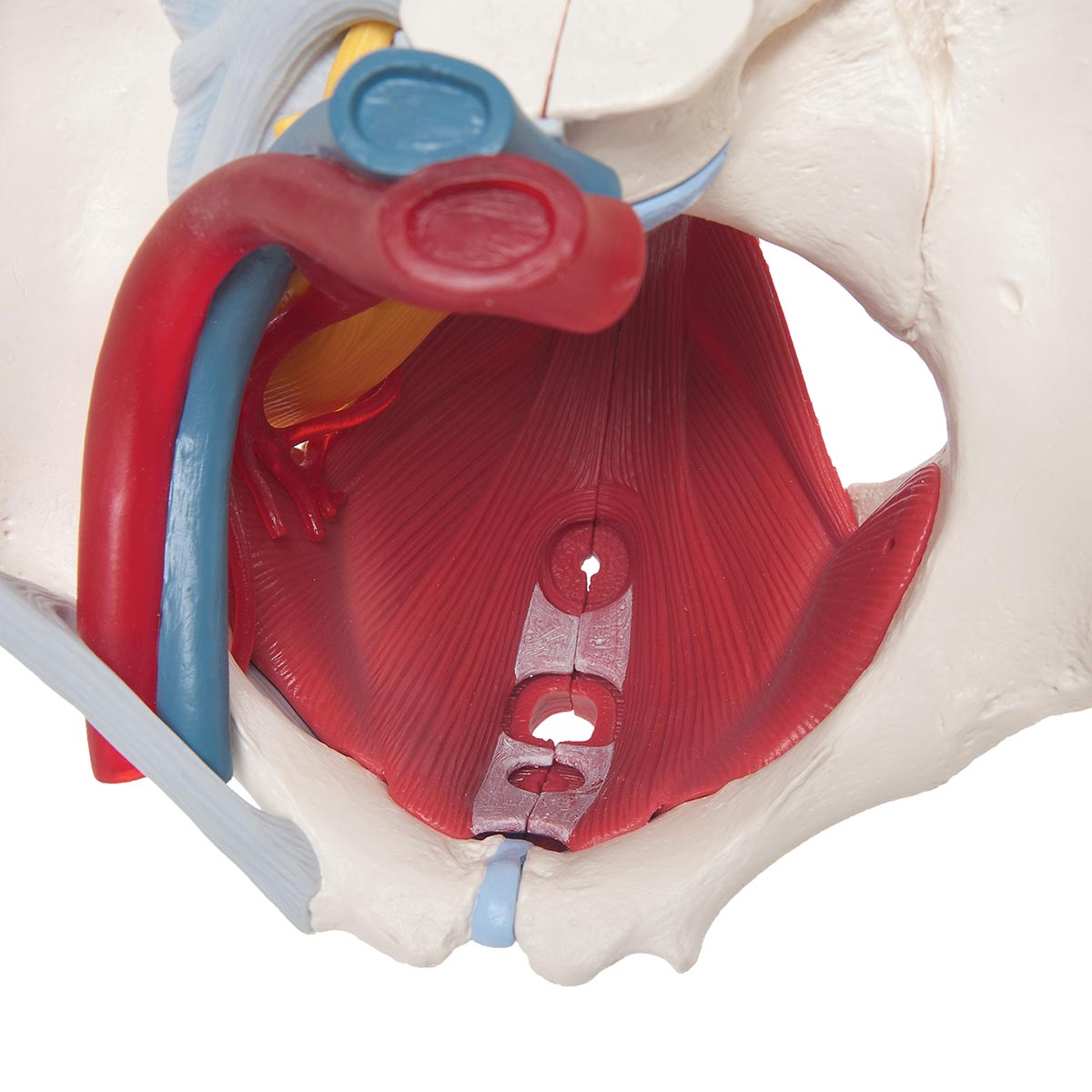
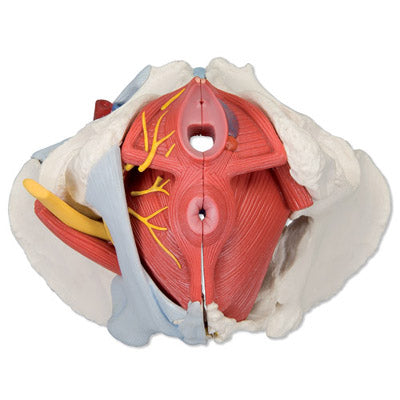

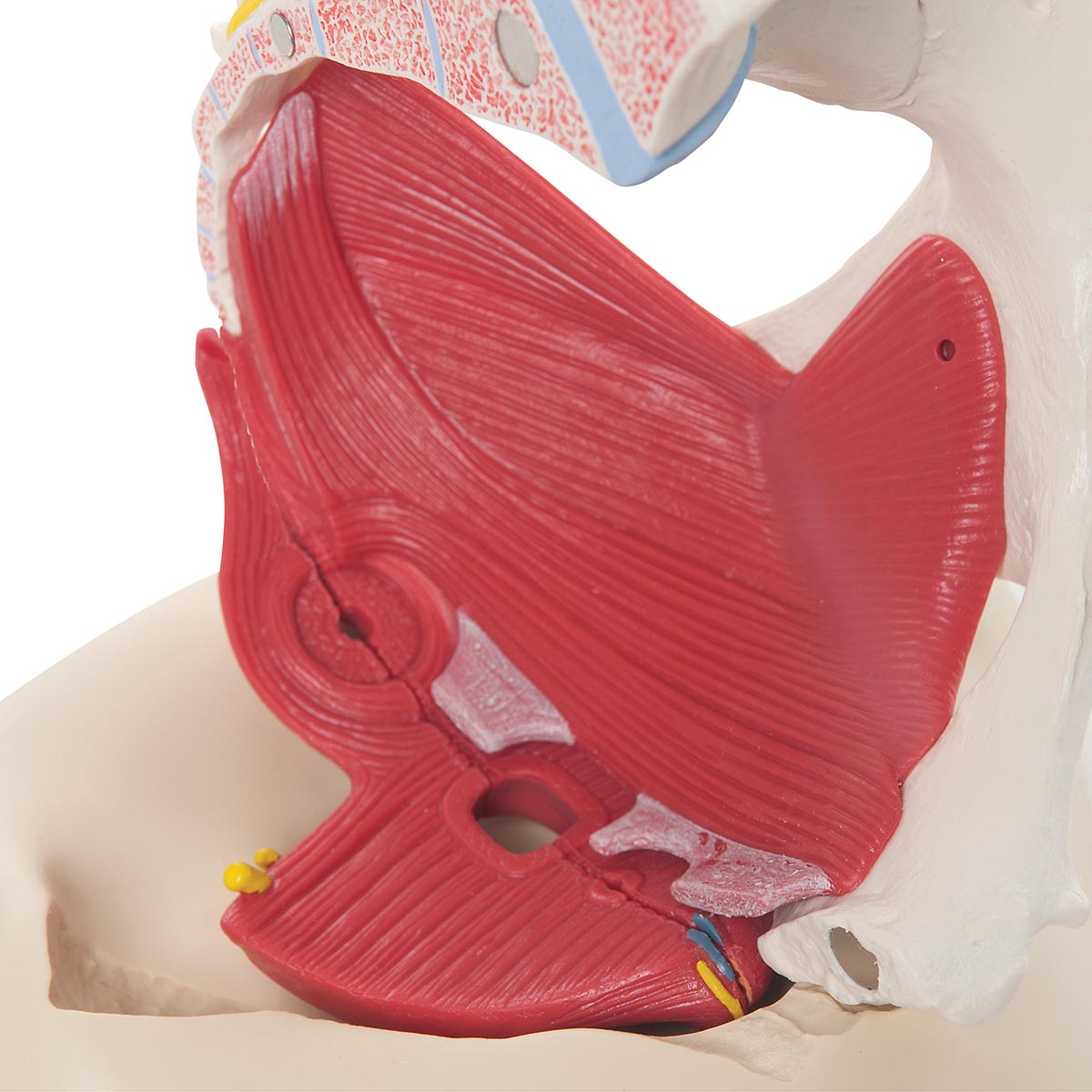
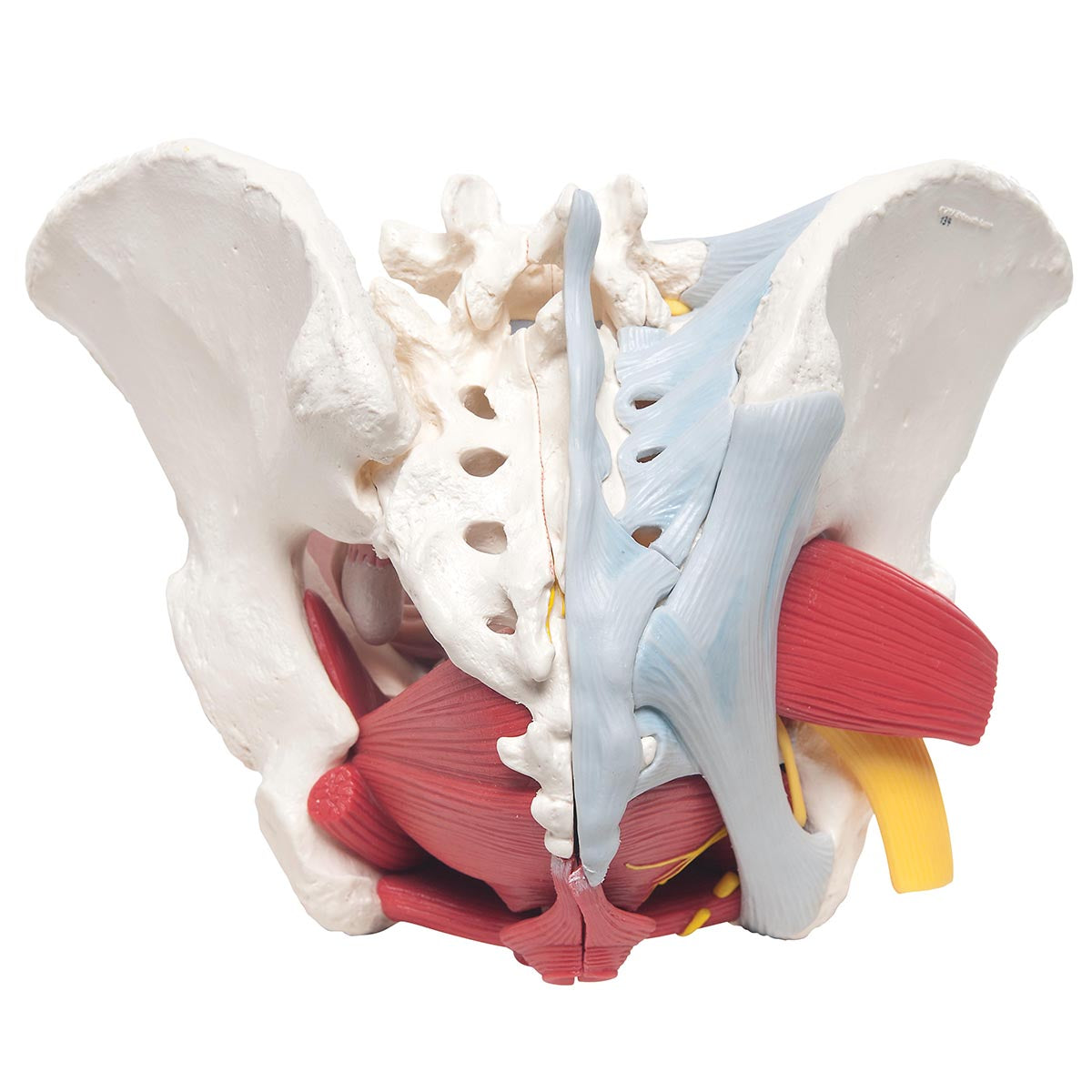
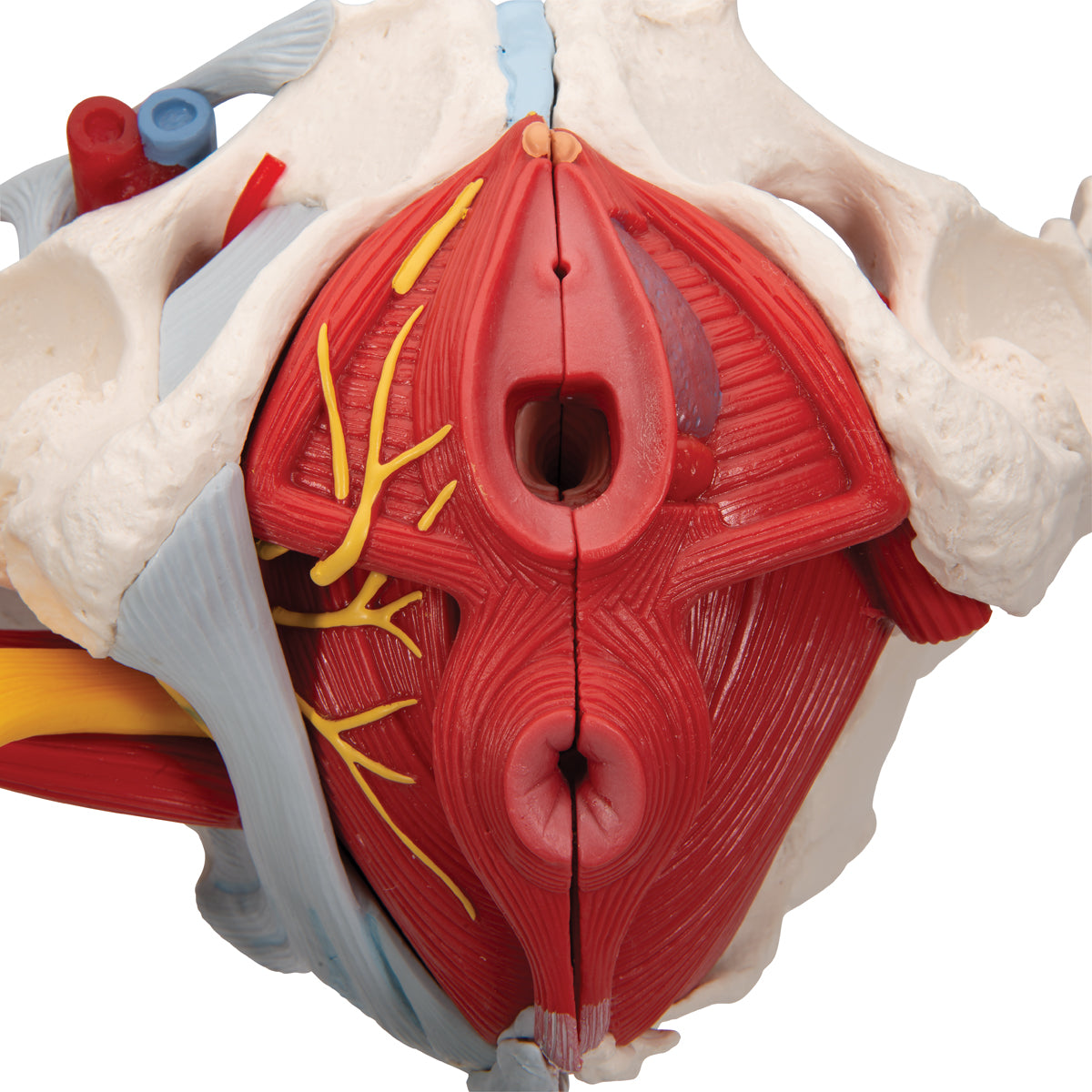

A safe transaction
For 19 years I have been managing eAnatomi and sold anatomical models and posters to 'almost everyone' who has anything to do with anatomi in Scandinavia and abroad. When you place your order with eAnatomi, you place your order with me and I personally guarantee a safe transaction.
Christian Birksø
Owner and founder of eAnatomi and Anatomic Aesthetics

